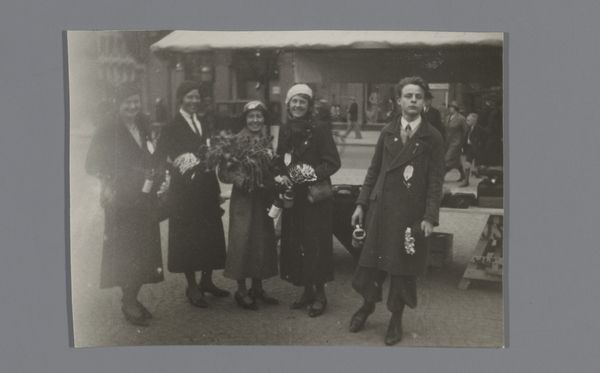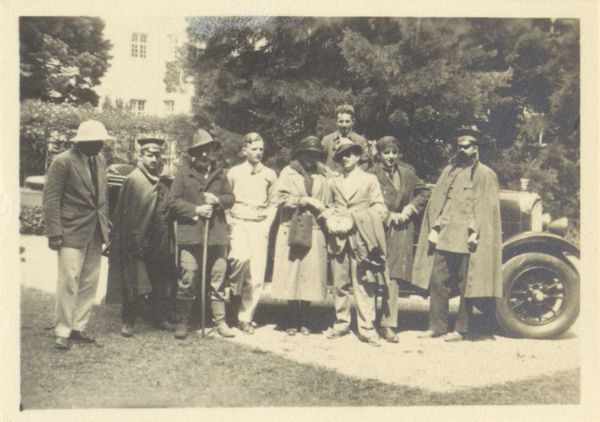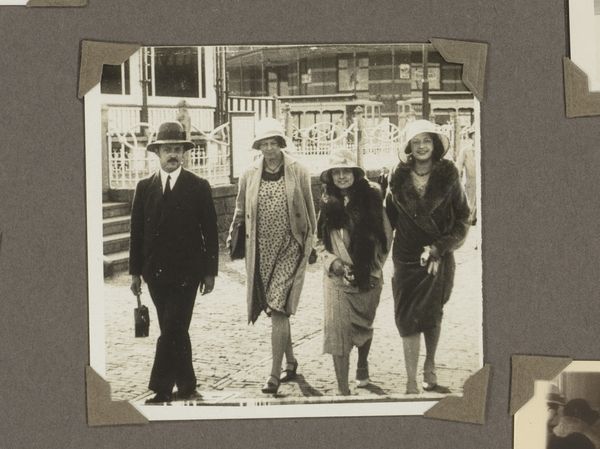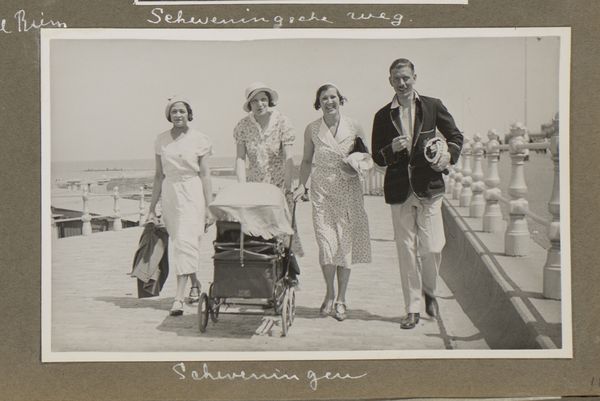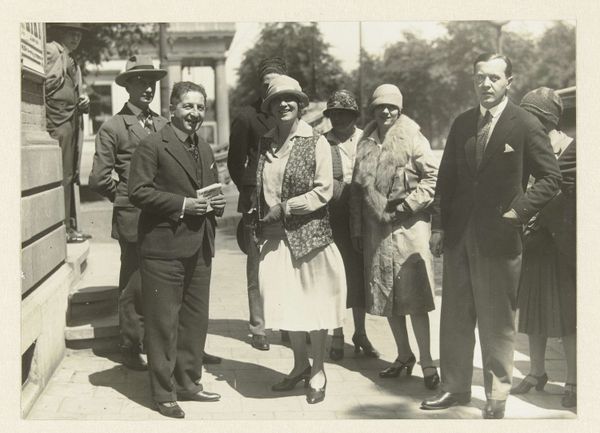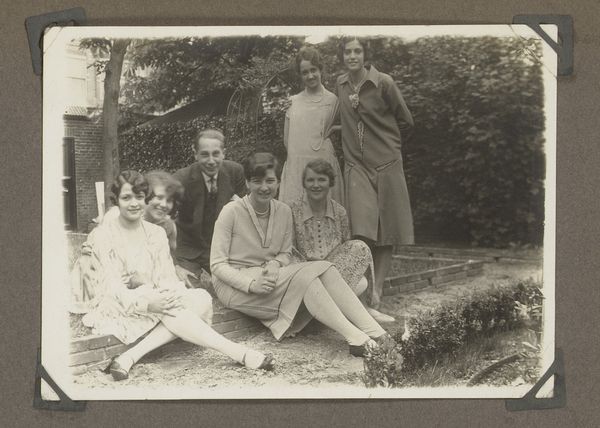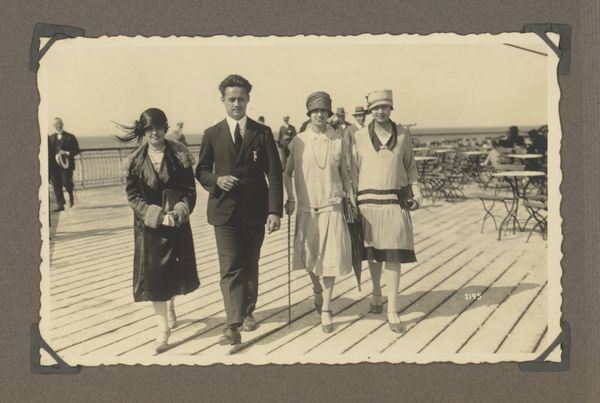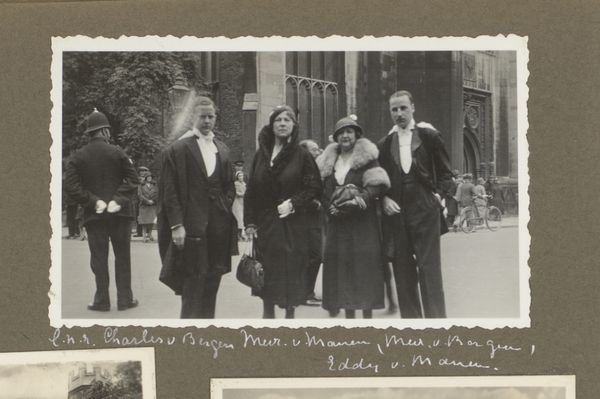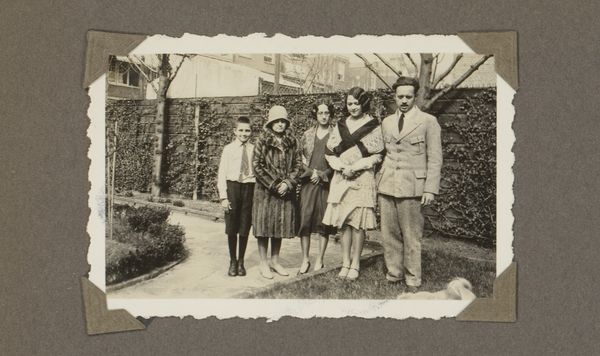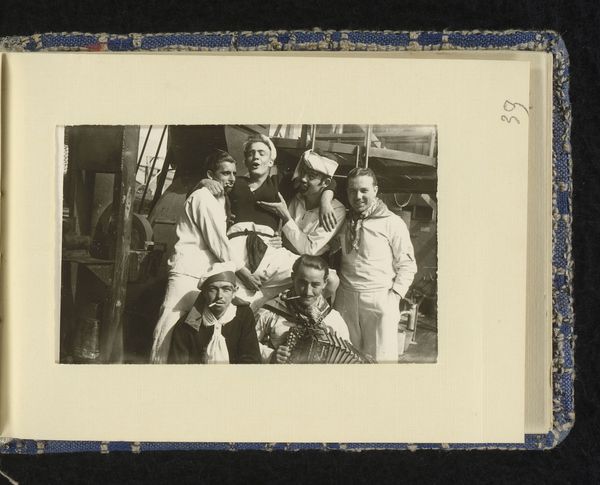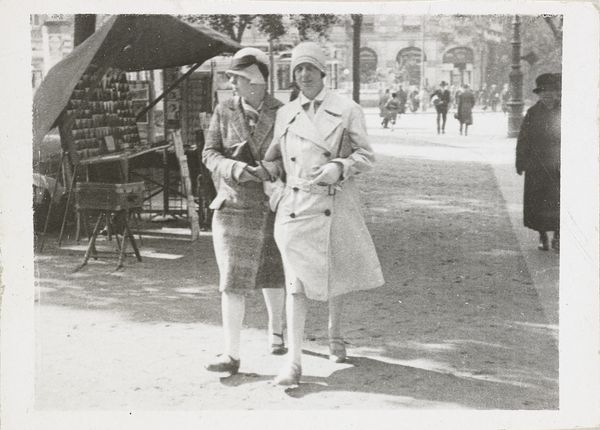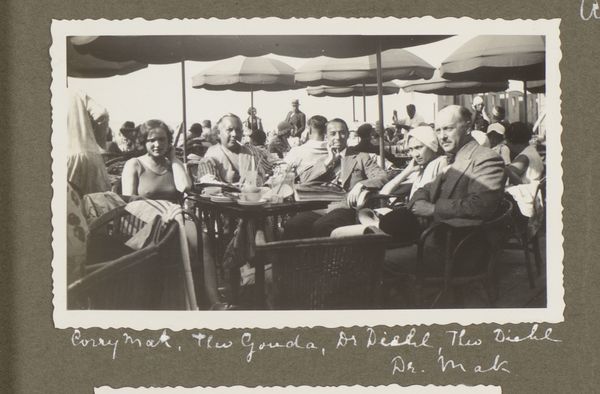
photography, gelatin-silver-print
#
portrait
#
photography
#
historical photography
#
historical fashion
#
gelatin-silver-print
#
cityscape
#
genre-painting
#
modernism
Dimensions: height 89 mm, width 140 mm
Copyright: Rijks Museum: Open Domain
Curator: Looking at this photograph, I immediately notice the light. It’s soft, diffused, making everything appear somewhat ethereal. Editor: And indeed, this is an intriguing gelatin silver print titled “Groepsportret van een gezelschap, lopend in Scheveningen,” or “Group portrait of a company, walking in Scheveningen.” It’s estimated to have been created between 1932 and 1937 by an anonymous photographer. What's striking is how it captures an ordinary scene. Curator: "Ordinary," perhaps, but elevated by the detail. The clothes they're wearing, those stripes, the cloth of that baby stroller: a strong index of middle-class identity on holiday. Consider also the labor of producing these garments. Editor: That's a valuable point. The choice of Scheveningen as the backdrop speaks volumes about leisure, access, and social mobility in that period. We are looking at a constructed image of modernity and perhaps even upward mobility for this specific social group. Curator: There’s something almost performative about it. Are they consciously posing or is this just a snapshot capturing their lifestyle? The clothing worn by members in the photograph signifies social codes. The casual jackets, light summer dresses... materials meant to look elegant yet practical, probably sourced through burgeoning department stores in urban centers. Editor: Yes, I agree! The very act of commissioning such a photo—presumably by the subjects themselves, considering the nature of group portraits—suggests a self-awareness, a deliberate act of documenting their presence in this space, affirming their participation in contemporary culture. It would be easy to say “just a family”, but so much more than just that is present in the historical context, which we should reflect on. Curator: Well said, because examining the materiality allows us a better lens for the nuances involved in creating an image of leisure, and for seeing the craftsmanship in the cloth and the development of the photograph itself as commodities. It asks viewers now to recognize what went into their depiction, what labor was obscured in making the scene. Editor: Looking at this photo, then, encourages one to ask who is included and, more importantly, who isn’t. Where is everyone else, and why did this group decide to leave a portrait behind like this, for people such as us to view? It’s this tension between individual lives and social frameworks that really holds my interest. Curator: Ultimately, analyzing process and material transforms how we interact with such snapshots, inviting viewers to look past mere imagery and to analyze an age's industrial and production efforts. Editor: Precisely! A photograph captures a single moment but its relevance stretches across years if viewed critically.
Comments
No comments
Be the first to comment and join the conversation on the ultimate creative platform.

